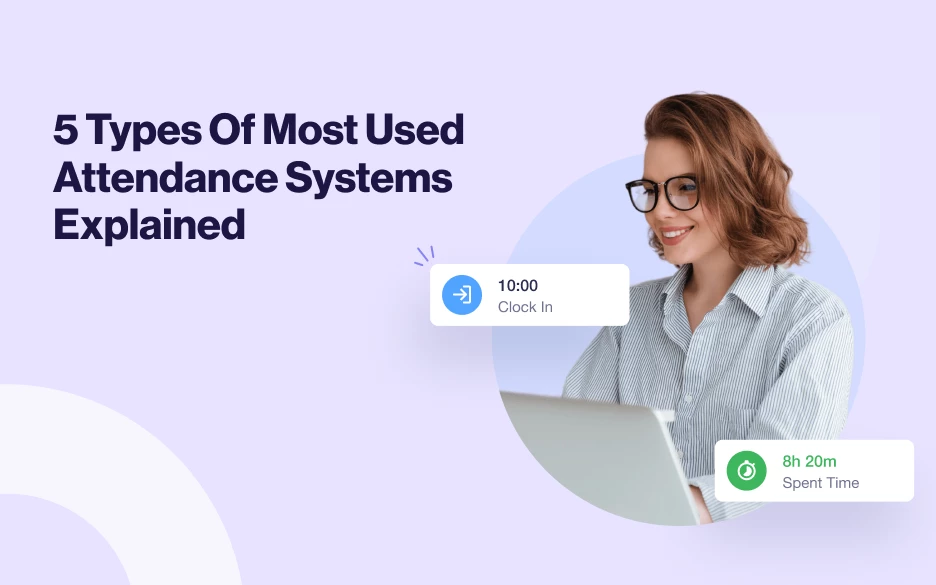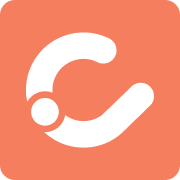Every thriving business needs a straightforward attendance system. However, there are many types of attendance systems to choose from. While one type of system might work well for your organization, it might not make sense for another business.
Whether you’re a small business or a corporate giant, you have to integrate an attendance management system if you have employees. In today’s discussion, we will break down five different types of attendance systems and explain how each one works.
Before we get into the details of different types of attendance systems, let’s take a moment to learn a little about them.
What Is An Attendance System
An attendance system is a way of managing employee check-in and check-out times in the workplace. Not only do such systems ensure businesses’ payroll is established accurately and efficiently, but they can also eliminate payroll fraud, reduce human error, and prevent companies from breaking the law on labor regulations.
From a good old manual register to high-tech biometric and digital solutions, attendance systems take many forms depending on organizational requirements and size.
Manual Recording
A traditional approach to recording attendance using pen and paper or a digital logbook is manual recordkeeping. Staff sign in on paper sheets or use a punch time card system with their hours written down in a later digital spreadsheet.
This is an easy and budget-friendly way of getting started. However, this is unsafe because records can be easily falsified, time-consuming, and prone to human errors. Reporting and Analysis may not be efficient
Although manual attendance recording poses these difficulties, it is usually adopted by small businesses or those which have no technology means. When companies grow, they usually get automated systems to be more accurate and most of all faster.
Timesheets
Timesheets are essentially an upgraded version of manual record keeping, where people log in their time spent on each task on a daily, weekly, or monthly basis as well. As a method of attendance tracking, timesheets provide a detailed breakdown of tasks completed by an individual using their total work hours.
The appeal of using timesheets is that they log hours based on tasks, also giving you a total insight into your teams’ efficiency. This detailed view will allow you to reorganize talents based on their agility and time management skills.
Also, timesheets give you the opportunity to reassign teams in the best way possible to maximize productivity. It can further reduce the administrative burden to a considerable extent.
Software
The incorporation of new and improved software of the 21st century is a justified trend that is famous when it comes to the use of attendance systems. Such attendance tracking systems not only perform time-tracking tasks but also generate individual time dynamics reports.
From these reports, you can get patterns that depict attendance, absenteeism, lateness, and overtime, among other things, and tips on how to contain these problems through software forms of attendance.
Furthermore, they ensure data integrity via the rights of access to only allowed personnel and help organizations abide by their legal obligations on labor policies by providing records. You are also provided with the ability to guide your team with the help of roles and account profiles, where you allocate certain rights to your team so they can only interact with the system in the way you need.
In other terms, overall the software attendance systems are crucial for augmenting the efficiency, dependability, and transparency of the attendance systems while reducing the expenses and any conceivable issues that might occur in real-time.
For a time management system that is optimized for businesses of all sizes, try Crewlix’s time management module.
Proximity Cards
Proximity cards are a convenient and efficient way for any company to track individual attendance. This card technology is Radio Frequency Identification (RFID) based, so card bearers can clock in / out simply by waving or tapping their card in front of a reader.
Working with this, you can decrease the use of manual timekeeping, which minimizes errors and saves time. Proximity cards also serve to control access within a company; they are difficult to damage; however, they are prone to face technical difficulties on a regular basis. In general, they help expedite the attendance process and simplify it for employees and management.
Swipe Cards
Swipe cards are inserted into a card reader, where they capture individuals’ attendance. This method minimizes working with paper and pen, thereby lessening the possibility of errors and making tracking working hours much easier.
Using these cards means easy access with an extra layer of security to existing security systems in place. They make attendance an easy process since time is well recorded, the employees and managers can also be in a position to manage the working hours easily.
However, the threat of ‘buddy punching’—where one person clocks in for another—remains.
Biometrics
People use fingerprints or facial recognition in most biometric attendance systems settings. Usually, there is a reader at the entrance that matches their prerecorded data with a currently input one and registers their clock-in or clock-out status.
This method of attestation is very secure as most biometric traits are very hard to imitate or forge in this section; only authorized individuals can register their attendance. Since conventional card-based systems are not used, the chances of people losing their credentials are greatly reduced.
Final Verdict
Although there are different types of attendance systems, and some are more sophisticate than others, it is important to choose wisely which one better fits your organisation in relation to functionality and cost.



